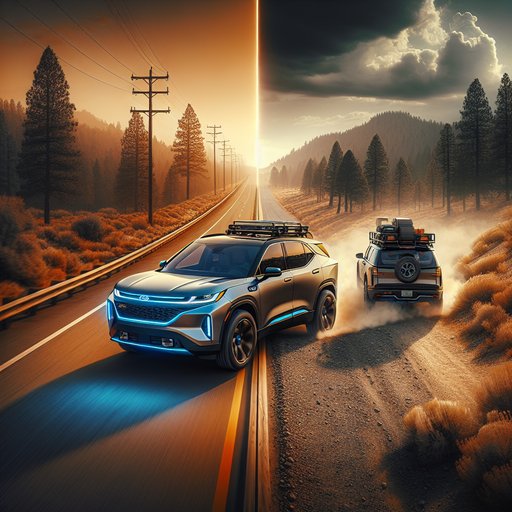
Toyota’s reborn Land Cruiser returns to the U.S. as a two-row, hybrid-only SUV built on the TNGA-F ladder frame. We spent a week and 620 miles testing it across commute traffic, interstate slogs, a rutted fire road, and a light towing run to see if the legend lives up to its new mission.
Our tester was a mid-grade Land Cruiser with the 12.3-inch infotainment system, full-time 4WD with low range, a locking center differential, and the optional rear locker plus the Stabilizer Bar Disconnect Mechanism (SDM). Power comes from the i‑FORCE MAX hybrid: a 2.4-liter turbo-four paired with an electric motor in the 8‑speed automatic for a combined 326 hp and 465 lb‑ft. Curb weight is just over 5,000 lb, tow rating is 6,000 lb, and our example rode on 18-inch all-terrain tires. We split our driving roughly 60/40 highway-to-city and logged ambient temps from 48°F to 86°F.
On our test loop, the Land Cruiser recorded 0–60 mph in 7.1 seconds (VBOX) and stopped from 60 mph in 133 feet—respectable for an off-road-biased SUV on A/T rubber. Cruising at 70 mph, we measured 69 dBA in the cabin. The EPA rates it at 23 mpg combined; over 310 mixed miles we averaged 24.2 mpg indicated, aided by the hybrid’s frequent engine stop-start and early torque fill that masks turbo lag. Ride quality is impressively controlled for a body-on-frame truck.
The primary ride is supple and the secondary motions are well damped, though sharp-edged potholes still send a jiggle through the structure. Steering is light but precise on-center, and the brake pedal has consistent take-up with subtle regenerative blending. The 8-speed keeps the 2.4T in its torque band without hunting, and manual control via the shifter is useful on grades. Road and tire noise are present on coarse surfaces but never intrusive.
Off-road, the numbers and hardware translate into confidence: quoted ground clearance is 8.7 inches with approach/departure/breakover angles around 31/22/25 degrees. The SDM noticeably improves front-axle articulation on cross-axle ruts, while Multi‑Terrain Select and Crawl Control deliver smooth traction with less of the old ABS chatter. With the center diff locked for loose climbs and the rear locker engaged on offset ledges, the Land Cruiser walked up obstacles that stopped a street-tired crossover cold. The 360-degree Multi‑Terrain Monitor is crisp and genuinely useful for wheel placement.
We towed a 3,500‑lb single‑axle utility trailer for 62 miles. The powertrain felt unfazed, holding top gear on level ground and downshifting early on hills without excessive rev flare. Transmission temps stayed in the green, and trailer-sway control remained unobtrusive. Expect 14–15 mpg while towing moderate loads.
Payload varies by spec; our truck’s door‑jamb sticker listed just over 1,500 lb, which is practical for family gear plus a tongue weight. Cabin ergonomics are a win: upright seating, excellent sightlines, and big, glove-friendly controls. The 12.3-inch screen is quick, with wireless CarPlay/Android Auto and useful off-road data pages; physical knobs for volume and climate reduce frustration. Rear-seat space is adult-usable, and the two-row-only layout yields a flat, wide cargo floor.
Toyota Safety Sense 3.0 works well in traffic; lane tracing is best left off on narrow, crowned backroads. As tested at $66,8xx, the Land Cruiser delivers authentic trail ability with daily-driver polish. If you value efficiency and real off-road hardware, choose 18-inch wheels, SDM, and the rear locker; luxury seekers may prefer the softer, pricier Lexus GX or Land Rover Defender, but few rivals match this blend of usability and capability.












